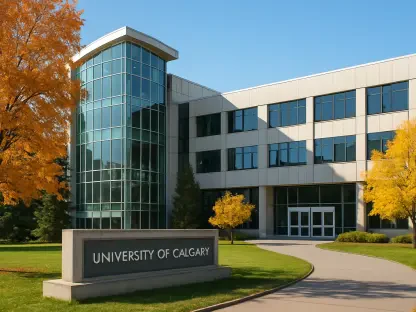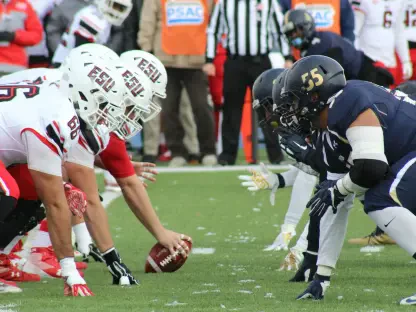Families that once treated online school as a temporary fix now expect it to function as a dependable pathway, and districts that improvised during closures have since turned those pilots into permanent schools with clear expectations, defined staffing, and measurable results that move beyond the ad hoc feel of emergency remote learning. The change is visible in enrollment that stayed well above pre-pandemic levels, in program designs that separate full-time virtual from supplemental options, and in a statewide conversation about how to measure quality across public, charter, and private voucher providers. What began as a lifeline has become a lever: districts use virtual seats to retain students, expand electives, and tailor schedules, while families use them to align education with health needs, work, and ambitions that do not fit a traditional bell schedule.
Demand And Enrollment Trends
Virtual enrollment stabilized at a scale that would have seemed unlikely just a few years ago, signaling a durable shift rather than a fading spike. Statewide, full-time virtual charters counted about 13,500 students across 58 schools, down from the 2020–21 crest above 16,000 yet still roughly 55% beyond pre-pandemic. The level matters less than the direction: interest did not revert to prior baselines, and participation now cuts across rural consortia, suburban districts, and urban systems. Parents who sampled online formats for health or safety kept returning for flexibility, and districts that once feared attrition discovered a tool to retain enrollments that might otherwise migrate to neighboring districts or out-of-state programs.
The distribution of growth has been uneven but revealing. The Rural Virtual Academy, anchored in the Medford Area Public School District, emerged as the state’s largest with about 2,260 students, showing how a multi-district model can scale in places that struggle to staff niche courses. In Milwaukee, district leaders created a full K–12 option—Milwaukee Virtual School—with roughly 1,050 enrollees, mostly high schoolers, to keep students inside the system while offering a structured alternative to brick-and-mortar attendance. Elsewhere, Kiel eSchool and Between the Lakes Academy built primarily asynchronous pathways that let learners take required courses alongside electives their home districts could not consistently offer, smoothing out the staffing and scheduling constraints that used to cap opportunity.
Models, Motivations, And Rigor
Reasons for choosing virtual school converged on one word: flexibility. For some families, that meant aligning coursework with intensive training in arts and athletics—like a teen dancer spending hours at the Milwaukee Ballet Academy while keeping credit accumulation on pace for graduation. For others, health conditions, disabilities, caregiving roles, or part-time employment made daily travel impractical. The draw was not novelty; it was control over pacing, place, and sequence. When schools mirrored that flexibility with clear calendars, predictable feedback, and built-in check-ins, attendance and completion patterns looked less erratic and more like the steady cadence of a well-managed independent study program layered with teacher support.
Districts leaned into structures that matched those motivations. Pandemic stopgaps morphed into charters and long-term online academies that shared curricula, data systems, and staff development with their host districts. The result was professionalization: online coordinators tracked time-on-task, teachers redesigned assessments for demonstration of mastery, and counselors monitored course loads to prevent bottlenecks in math or world languages. Kiel eSchool and Between the Lakes Academy exemplified the asynchronous end of the spectrum, giving students the freedom to progress within guardrails, while the Rural Virtual Academy and Milwaukee Virtual School blended synchronous touchpoints with self-paced modules to keep students anchored to a teacher and a peer cohort.
Rigor remained a constant theme, and program leaders were blunt about misconceptions. Online school did not remove workload; it redistributed it, demanding self-management that many students underestimated at first. Educators reported that early weeks often recalibrated expectations as learners realized that progress depended on logs, benchmarks, and mastery checks, not just attendance in a video call. Families echoed that truth: success hinged on routines, quiet space, and consistent communication with teachers. Schools that built in advisory periods, small-group tutoring, and responsive office hours reported fewer mid-semester withdrawals and steadier credit accrual, countering the notion that virtual formats automatically diluted academic expectations.
Oversight, Outcomes, And The Hybrid Path
The rapid rise of virtual instruction within Wisconsin’s private choice sector brought new scrutiny to rules that had not been written with online delivery in mind. Since a 2020 decision opened the door, some voucher schools ramped up virtual enrollment quickly, most notably the Academy of Excellence in Milwaukee, which was set to receive more than $50 million in public funds. Investigative reporting questioned facets of the school’s programming and related-party transactions, prompting debates that stretched beyond one provider. The Department of Public Instruction argued that current law lacked virtual-specific requirements for private choice schools and supported tighter guardrails on transparency, attendance, and instructional quality to align public funding with public accountability.
Across models, practitioners focused on outcomes that mattered regardless of governance: steady engagement, timely feedback, and clear pathways through required courses. Virtual options helped districts broaden electives, add Advanced Placement and career courses, and plug staffing gaps without sacrificing alignment to graduation standards. Looking ahead, leaders described a blended future that had already begun to take shape: students split time between online coursework and targeted in-person work—lab experiments, arts rehearsals, mentoring, apprenticeships—so that flexibility did not come at the cost of hands-on learning or social connection. As a practical next step, districts mapped schedules that allowed students to report for specific blocks while completing the rest remotely, and policymakers laid out virtual-specific rules for voucher schools to tighten oversight without stifling innovation.









